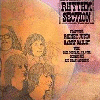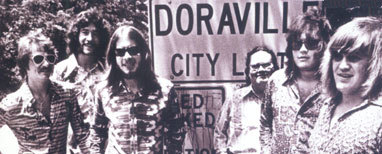|
The
story of the Atlanta Rhythm Section began in Doraville, GA, a
small town northeast of Atlanta, in 1970. Local Atlanta engineer
Rodney Mills built a new studio in Doraville with the support
of music publisher Bill Lowery, producer/songwriter/manager Buddy
Buie, and songwriter/guitarist J.R. Cobb. The studio was dubbed
Studio One and would become one of the preeminent studios in the
Atlanta area. Over the years, artists who recorded there included
Al Kooper, Lynyrd Skynyrd, Joe South, Bonnie Bramlett, Dickey
Betts, B.J. Thomas and Billy Joe Royal.
The
Atlanta Rhythm Section originally came together as the house band
at Studio One. Buie and Cobb had been part of the group the Classics
IV - remembered for hits including "Spooky," "Stormy" and "Traces."
Buie recruited three musicians he had worked with previously in
the Candymen, a group that backed Roy Orbison-singer Rodney Justo,
keyboardist Dean Daughtry and drummer Robert Nix. Two talented
local session players also joined in-guitarist Barry Bailey and
bassist Paul Goddard. These musicians played on a number of other
artist's records and the decision was made to make an album on
their own.
Buie
wanted the best players doing his songs as a guitar based band,
and he wrote, produced and managed ARS from the start. Buie, Daughtry
and Nix did a lot of the songwriting together. The Rhythm Section
would play on other's albums 3-4 days a week and then work on
their own material. They recorded a demo featuring instrumentals
and over a couple of years pulled together material for an album.
The demo got them a two record deal with MCA/Decca, and so ARS
officially began.
The
First Album - "The Atlanta Rhythm Section"
The
ten songs that make up ARS' self-titled debut album were recorded
at Studio One in Doraville, GA in Nov. 1971. Producer/songwriter
Buddy Buie wrote nine of the songs in partnership with others
in the band. While the sound of the album may have become a little
dated over time, what still comes through today are two traits
that ARS was starting to refine and would prove to be their strong
points over the years-great songwriting and excellent musicianship.
The
album was released in 1972 and generated some critical interest
for the quality of the songs and musicianship. But there was also
some questioning of the idea of a rock band made up of a group
of studio musicians who hadn't paid their dues on the road. The
album didn't produce any hit songs, so the group continued to
play on other artist's records at Studio One.
It
was during the recording of the first album that Ronnie Hammond
came to Studio One as an assistant engineer for Rodney Mills.
He was skilled on multiple instruments and most importantly had
a great singing voice. When singer Rodney Justo decided to leave
the group to pursue a solo career, Hammond became the new lead
singer. This group of musicians would go on to make the next six
ARS albums together. In 1972, the group tried to broaden their
approach as they worked on their second album for MCA/Decca.
|

